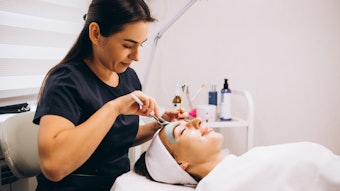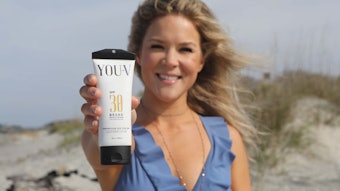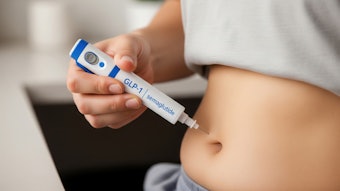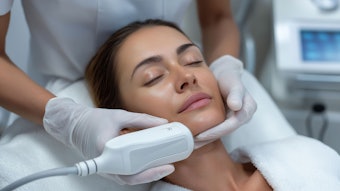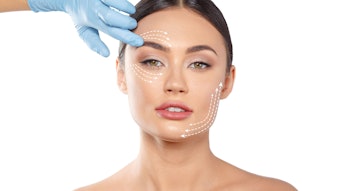
Khloe Kardashian and other celebrities, including her sister Kylie Jenner and Megan Fox, have openly discussed the cosmetic treatments they’ve undergone. Once seen as taboo for celebrities to discuss, unsure whether they should be transparent about their beauty secrets at the expense of their elite image, their disclosure points to the great influence they have on consumer decisions. The impact has positively swayed deliberate treatment plans in aesthetic practices, as celebrities use their platforms to uphold a reputation of being someone patients aspire to be, rather than someone they could never be.
How Celebs Are Embracing Transparency and Personalized Aesthetic Plans in the Age of Tailored Transformation
“In the past, celebrities were often very quiet about what they had—or hadn’t—done,” says Johnny Franco, MD, FACS. “They’d credit their looks to clean eating, good sleep and sunscreen, when in reality, there were often a number of treatments involved behind the scenes.”
Jonny Betteridge, MD recently posted an Instagram Reel speculating the cosmetic work Kardashian underwent. Kardashian cleared it up, casually breaking down her key to staying youthful and radiant in the comment section. She said she’s received a nose job and laser hair removal, as well as Botox and Sculptra to rejuvenate the area where her face tumor was removed in her cheek.
In the past, she confesses she used filler but not over the last few years. She does regularly receive salmon sperm facials, integrating peptides, vitamins and daily skin care to slow down aging and delay the interference of surgery. To further stimulate collagen, she tightens the skin using Sofwave and improves its texture with collagen baby threads underneath her chin and neck.
“In 2025 there are many other things we can do before surgery but when it's time, and if I choose to, I know some great doctors,” Kardashian wrote in her comment.
Franco credits this recent flaunting of treatments, that was once more secretive, to the introduction of GLP-1 medications. Transformations suddenly became accessible, empowering and personalized. It introduced control over the way many wish to present themselves.
“People—including Oprah—started opening up about their experiences and the use of new GLP-1 medications to help them along the way,” Franco says. “Now we’re seeing that same openness roll into aesthetic treatments.”
Unfiltered Fame Meets Aesthetic Reality in a Culture Rethinking Beauty, Influence and Self-Investment
Celebrities shape style, beauty and social trends, even aiding mass health decisions with their advocacy. About 76% of U.S. adults, however, say the media promotes an unattainable body image for women [1]. The uptick in candid conversations centered around cosmetic procedures and setting the record straight on social media is allowing viewers to realize that most transformations they see take time, intention and expert support—not just great genes and fortune, like many once believed.
These conversations communicate that natural bodies do exist, that these bodies patients admire are investments and not entirely unattainable. It's no longer shameful to have cosmetic work done or exclusive either–it’s within reach of the masses, especially as the aesthetics industry expands, thanks to celebrity endorsements.
Viewers have begun to equate a better body to the right investment, as studies show social media platforms like Instagram significantly influence motivations for aesthetic surgery. Recent findings show 70% of young adult women and 60% of young adult men report dissatisfaction with their bodies, leading to their increased interest in surgical interventions [2].
Franco says celebrity transparency has sparked thoughtful discussion in practices and medspas, whether individuals do decide to fund the body they desire, or accept that the bodies they see on social media aren't entirely natural, and so it's okay for them to own or enhance their natural physique. Those discussions, motivated by inspirational images, have allowed surgeons like Franco to create a personalized treatment plan that works for the individual, especially as these celebrities credit the fact that they have a network of the right providers behind them, he says.
A Wharton study [3] looked at the psychology of celebrity endorsements, highlighting that people are more likely to choose products that are endorsed by a celebrity rather than a non-celebrity – a powerful, but sometimes dangerous persuasion.
Celebrities might be starting to realize that, from a body image standpoint, it’s not great to hide the things they’ve done, Franco says. Though they’re an elite group of people and secrecy has made them stand out, leaving people wondering how they look so “perfect,” influencers and celebrities are now praised for their relatable content.
“This shift has definitely changed our role as surgeons,” Franco says. “Patients are coming in expecting more education and long-term planning, and that’s a good thing; It allows us to work together to build a treatment plan that’s tailored to their goals and timeline—something that makes sense for them personally, not just based on a one-size-fits-all approach.”
Celebrity Influence vs. Informed Choice: Navigating Beauty Trends with Responsibility
Anil Shah, MD says celebrity endorsements always need to be taken in context, however. While Megan Fox and other public figures may claim to use Biotulin [4], it’s unlikely that this is the only product or procedure they rely on, especially if they are being paid to promote. Discussing a treatment or beauty secret creates a perceived benefit, but it’s not proof of effectiveness on its own, he says.
“Our job is no longer just performing the treatment—it’s helping patients navigate the journey with clarity, honesty and realistic planning,” Franco says. “The more we normalize that it’s a journey, not a quick fix, the more empowered patients are to make informed, confident decisions for themselves.”
It’s important to note, while celebrities’ transparency has led to acceptance and less judgment around undergoing cosmetic procedures, even inviting more informed discussions in aesthetic offices, ethical concerns remain around unrealistic beauty standards, highlighting the need for healthier body image promotion on social media as body dissatisfaction still lingers [2].
References:
2-https://pmc.ncbi.nlm.nih.gov/articles/PMC11350482/
3-https://knowledge.wharton.upenn.edu/article/the-marketing-psychology-behind-celebrity-endorsements/




